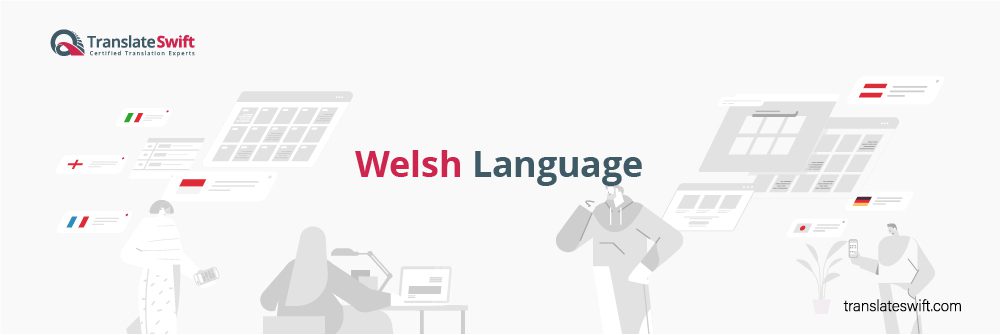
The Welsh language, also known as Cymraeg (pronounced kum-RAI-g), originated between the 5th and 6th centuries AD. During this period, the Common Brittonic language, spoken by the Britons, began to fragment into distinct Brythonic languages. Welsh, along with Cornish and Breton, emerged from this diversification. While Cornish is now extinct and Breton is spoken in Brittany, France, Welsh has persevered for over 1500 years.
Despite facing periods of decline due to political and social pressures, Welsh has experienced significant revivals. The 18th-century Methodist movement played a crucial role in promoting literacy in Welsh, and the 20th century saw a renewed focus on language preservation efforts. The Welsh Language (Wales) Measure 2011 further solidified Welsh’s status, granting it official language alongside English in Wales.
Current State of Welsh
Today, there are an estimated 538,300 speakers in Wales, representing around 17.8% of the population. While English remains the dominant language, Welsh enjoys official status and is used in education, government administration, and media. Welsh speakers can also be found in diaspora communities around the world. There are approximately 110,000 speakers in England, 1500 to 5000 in Argentina, around 3,885 in Canada and 1,737 in Australia.
Phonology
Welsh is a phonetic language, meaning pronunciation closely follows spelling. One of its most captivating features is its intricate sound system. Welsh utilizes mutations – subtle changes to the beginning of a word depending on its grammatical context. These mutations add a layer of complexity and musicality to the language.
For instance, the word “bach” (small) becomes “fawr” (big) when preceded by the definite article “y.” This system can be challenging for learners but adds a unique layer of expression to spoken Welsh. Furthermore, Welsh boasts sounds not found in English. The “ll” is pronounced like the “th” in “wreath,” while the “ch” resembles the sound in “loch.” Vowels can be short or long, further enriching the soundscape.
Writing System
The Welsh language is written using the Latin alphabet, but with a few additional diacritics. These diacritics represent sounds not found in English. For example, the circumflex (^) marks long vowels, while the acute accent (´) indicates stressed syllables. The diacritic “macron” (ˉ) lengthens vowels and differentiates them from their short counterparts. This unique script visually reflects the distinct soundscape of Welsh.
The Future of Welsh
Despite facing challenges in the modern world, Welsh is not a relic of the past. Initiatives like S4C, the Welsh-language television channel, and the expansion of Welsh-medium education programs are ensuring its continued evolution.
Eisteddfodau, a traditional poetry and music competition festival, continue to be popular attracting participants and audiences across generations. As Wales embraces its multilingual identity, Welsh stands strong, a testament to a resilient culture and a language that continues to captivate hearts and minds.
At TranslateSwift, we understand the power of language to connect cultures. Our team of experienced Welsh translators are here to assist you with any translation needs. We offer high-quality translations for all kinds of documents, ensuring that they are cultural sensitive, and accurate.
Other Languages
- English
- Spanish
- German
- Dutch
- French
- Italian
- Afrikaans
- Albanian
- Amharic
- Arabic
- Armenian
- Azerbaijani
- Basque
- Belarusian
- Bengali
- Bosnian
- Bulgarian
- Cantonese
- Catalan
- Cebuano
- Chichewa
- Chinese - Simplified
- Chinese - Cantonese
- Chinese - Traditional
- Chinese - Mandarin
- Corsican
- Croatian
- Creole
- Czech
- Danish
- Dari
- Esperanto
- Estonian
- Farsi
- Filipino
- Finnish
- Frisian
- Galician
- Georgian
- Greek
- Gujarati
- Haitian Creole
- Hausa
- Hawaiian
- Hebrew
- Hindi
- Hmong
- Hungarian
- Icelandic
- Igbo
- Indonesian
- Irish
- Japanese
- Javanese
- Kannada
- Kazakh
- Khmer
- Korean
- Kurdish
- Kyrgyz
- Lao
- Latin
- Latvian
- Lithuanian
- Luxembourgish
- Macedonian
- Malagasy
- Malay
- Malayalam
- Maltese
- Maori
- Marathi
- Mongolian
- Montenegrin
- Myanmar
- Nepali
- Norwegian
- Odia
- Pashto
- Persian
- Polish
- Portuguese
- Punjabi
- Romanian
- Russian
- Samoan
- Scots Gaelic
- Serbian
- Sesotho
- Shona
- Sindhi
- Sinhala
- Slovak
- Slovenian
- Somali
- Sundanese
- Swahili
- Swedish
- Tajik
- Tagalog
- Tamil
- Telugu
- Thai
- Turkish
- Ukrainian
- Urdu
- Uyghur
- Uzbek
- Vietnamese
- Welsh
- Xhosa
- Yiddish
- Yoruba
- Zulu
